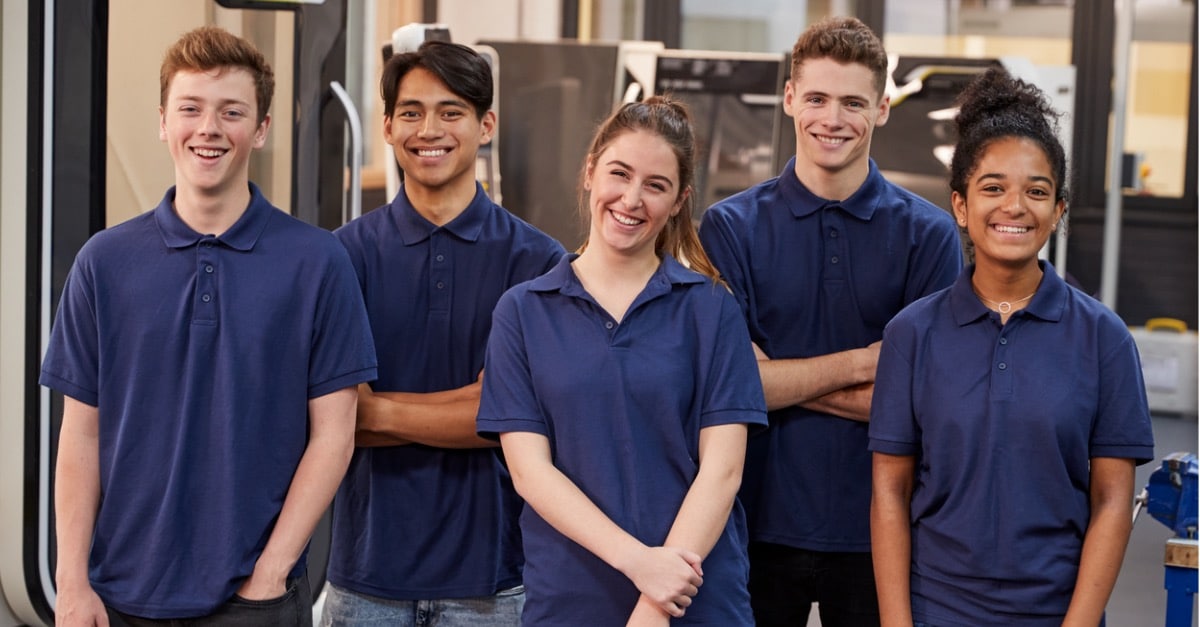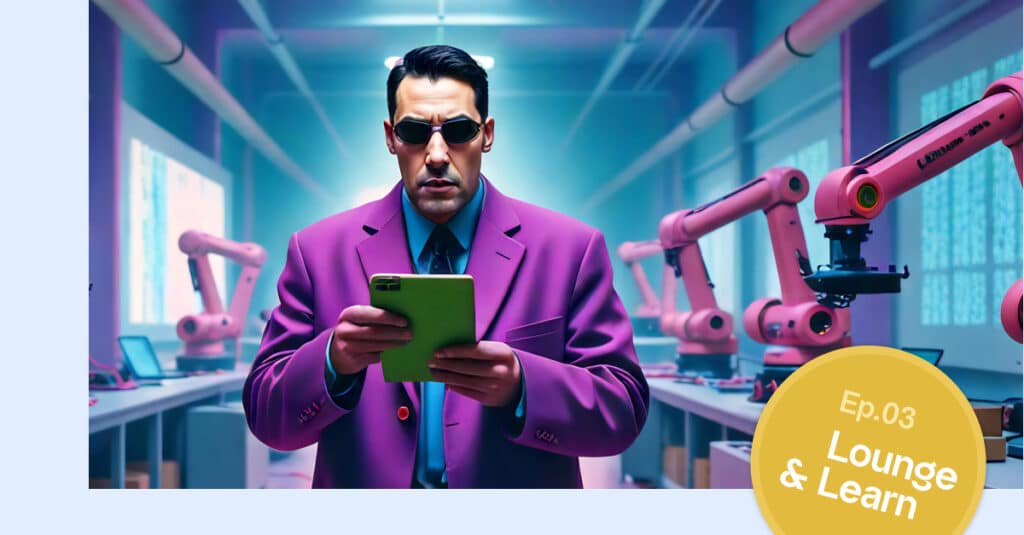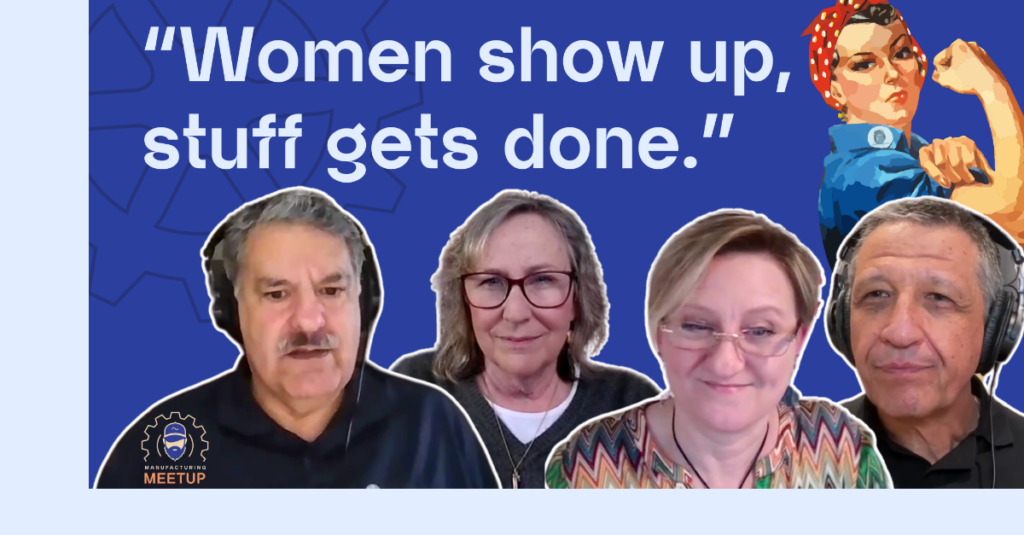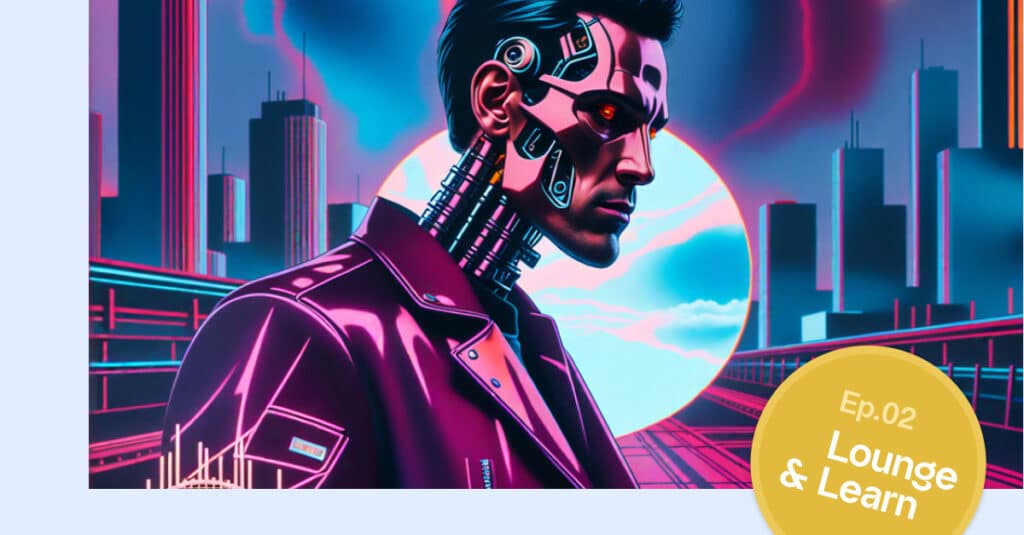
To confront the skilled labor shortage in manufacturing, it’s essential to create more education and training streams and opportunities. And according to Danelle DiLibero, Augury’s VP of People, it’s equally important to offer an updated vision of manufacturing – one that shows an industry that can appeal to a diverse population with a wide range of skills.
We know the problem: a massive skilled labor shortage in manufacturing.
First, on a purely practical level, tackling this involves paving new roads to stream people into a career in manufacturing. Colleges and universities are great and necessary for certain careers. But we need more alternatives in order to get skilled talent into the workplace without waiting three, four, or six years.
We must develop more apprenticeship and co-op programs and vocational schools in order to allow for students to gain hands-on training. Manufacturers will have to step up to build stronger partnerships and relationships with these earn-as-you-learn approaches – and maintain a strong in-house (re-)training culture for their employees throughout their careers.
Now, more than ever, employers are focusing on skill-based hiring, which allows job seekers to bypass higher education or a traditional college path altogether – potentially saving four years and hundreds of thousands of dollars. Here the focus is on identifying an individual’s core abilities and competencies and then training them according to what’s needed – and then training them again as these needs change over time.
As we all know, our world is changing all the time – and manufacturing with it.
Having A Normal Conversation About Manufacturing
A few nights ago, my son asked if I wanted to play a game. I was gearing up for a trivia game but instead he brought up “Coin Factory” on his computer. The premise of the game is to grow wealth by building the most operationally-efficient factory floor. The more successful the operations, the more money your production makes. We moved lines around, added skips in the process, and found duplicative lines that helped create a stronger output.
As anyone with a teenager knows this is an opportune time to strike up a conversation without being the annoying parent. Casually I asked what he liked most about the game. His first response was, “Look how much money I’m making!” But as I probed further, he admitted to most liking the puzzle element: seeing different pieces coming together – and then challenging himself to do it better and faster the next time. A-ha! It was now my moment to plant a new career idea in his head, and we ended up having a very natural conversation about operations, supply chain, Production Health, Process Health, safety, quality, engineering, and maintenance.
In other words, we had a conversation about manufacturing as it actually exists – and not as it is commonly misperceived…
Manufacturing is no longer filled with underpaid assembly line workers stuck on the same line in sector 7G for their entire careers.
The Perception Gap
As an industry, we must get out there and recruit, recruit, recruit. And our target audience needs to be exposed as young as possible so that manufacturing becomes a normal part of the range of options when youth start thinking about their professional futures. But to gain this “normalcy”, we must fight stigmas and rebrand manufacturing to resemble current realities and aspirations.
Manufacturing is no longer a world of black chimneys coughing out smog – a dirty and unhealthy workplace creating a dirty and unhealthy world. Manufacturing is no longer filled with underpaid assembly line workers stuck on the same line in sector 7G for their entire careers.
Things have changed… And of course, many are already highlighting these changes. Role models such as ‘The Manufacturing Millennial’ are standing up, and new positive terminologies, such as ‘new-collar workers’ and ‘the tool-belt generation’ are taking hold.
A Career In Sustainability?!?!
Manufacturing is, in fact, a sustainable career choice in two ways.
On an individual level, it can offer the opportunity for continued growth and development over a long and happy career.
On the global level, individuals can have a positive impact by being at the forefront of adopting AI and other deep-tech solutions to not only increase production but also chase down sustainability goals.
A manufacturing career is now very unlike the old idea of being on a single factory line doing repetitive work day in and day out. Many manufacturing organizations are multinational organizations where you can learn, grow, and follow your own career path – wherever in the world that might lead you. And you will be part of a greater whole as you do this.
Don’t Believe The Hype
So why aren’t we hearing more of these positive stories in the media? Certainly, it’s up to us to get these more positive stories out there – as a counterweight to all those ‘The Robots Are Coming For Your Jobs’ headlines.
But scratch the surface, the truth is that humans and machines are meant to co-exist. AI only helps people to work smarter – not to take their jobs away.
Around 10-15 years ago, the media was full of stories about how self-driving vehicles would make truck drivers obsolete. It pushed many people to choose other career paths perceived as more secure. And so today, we are experiencing a huge shortage of truck drivers – all based on a false but highly publicized assumption.
Similarly, the media is full of stories on how automation will take away all manufacturing jobs. It’s an easy story to sell. But scratch the surface, the truth is that humans and machines are meant to co-exist. AI only helps people to work smarter – not to take their jobs away.
After all, why be replaced by a tech when you can be inspired by it?
Aligning The Industry Around A Positive Message
I believe we, as an industry, have a very positive message to share – particularly with the younger generations. Gen Z and Generation Alpha are less interested in brand names and more interested in whether the brand is doing actual good. Are they treating their people right? Are they engaged with the local community? Are they taking care of the planet?
We must help people imagine themselves finding and playing a role in our dynamic and highly impactful industry.
Many of us can point to a measurably improving track record… That we as an industry are helping the economy and providing people with a safe and inclusive work environment… That we are applying technologies that reduce emissions and our environmental footprints… That we care about the future of our children, communities and planet… That manufacturing can no longer be considered a fallback job…
In short, we need people who want to join our team and help us to continue down this path. That’s the message we should be sharing. We must help people imagine themselves finding and playing a role in our dynamic and highly impactful industry. Ready to join? Let’s do this.
Read more by Danelle DiLibero: ‘Perfectly Aligned: Going From 1 To 2 – Together’.




